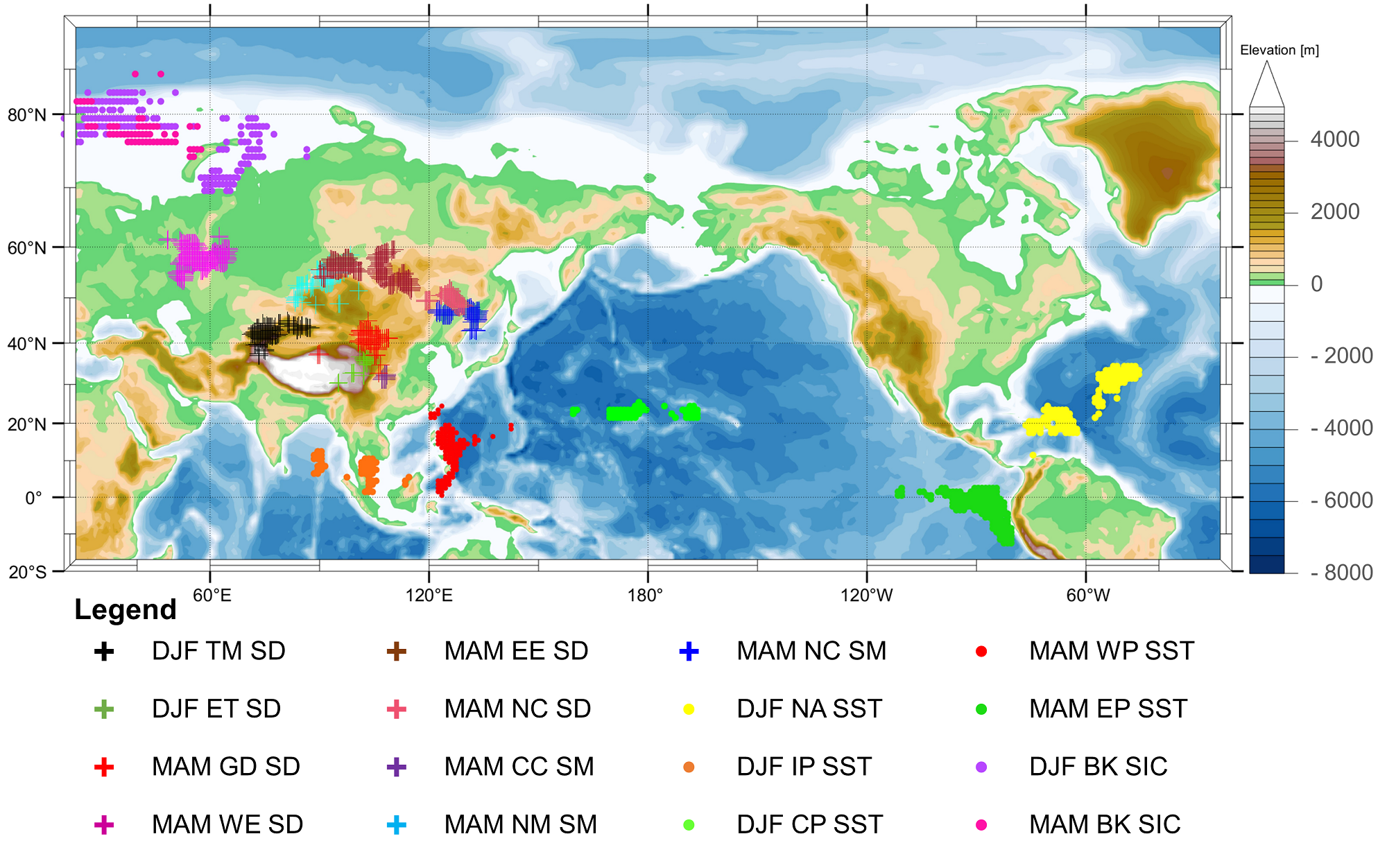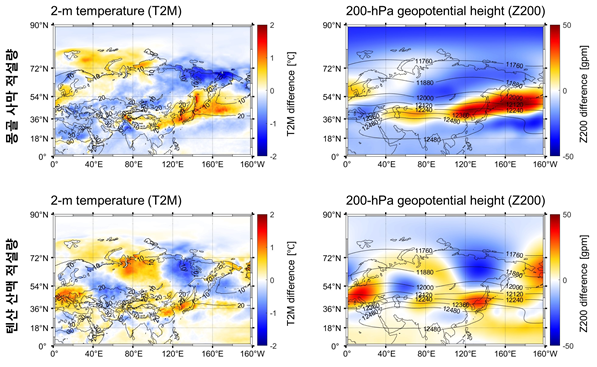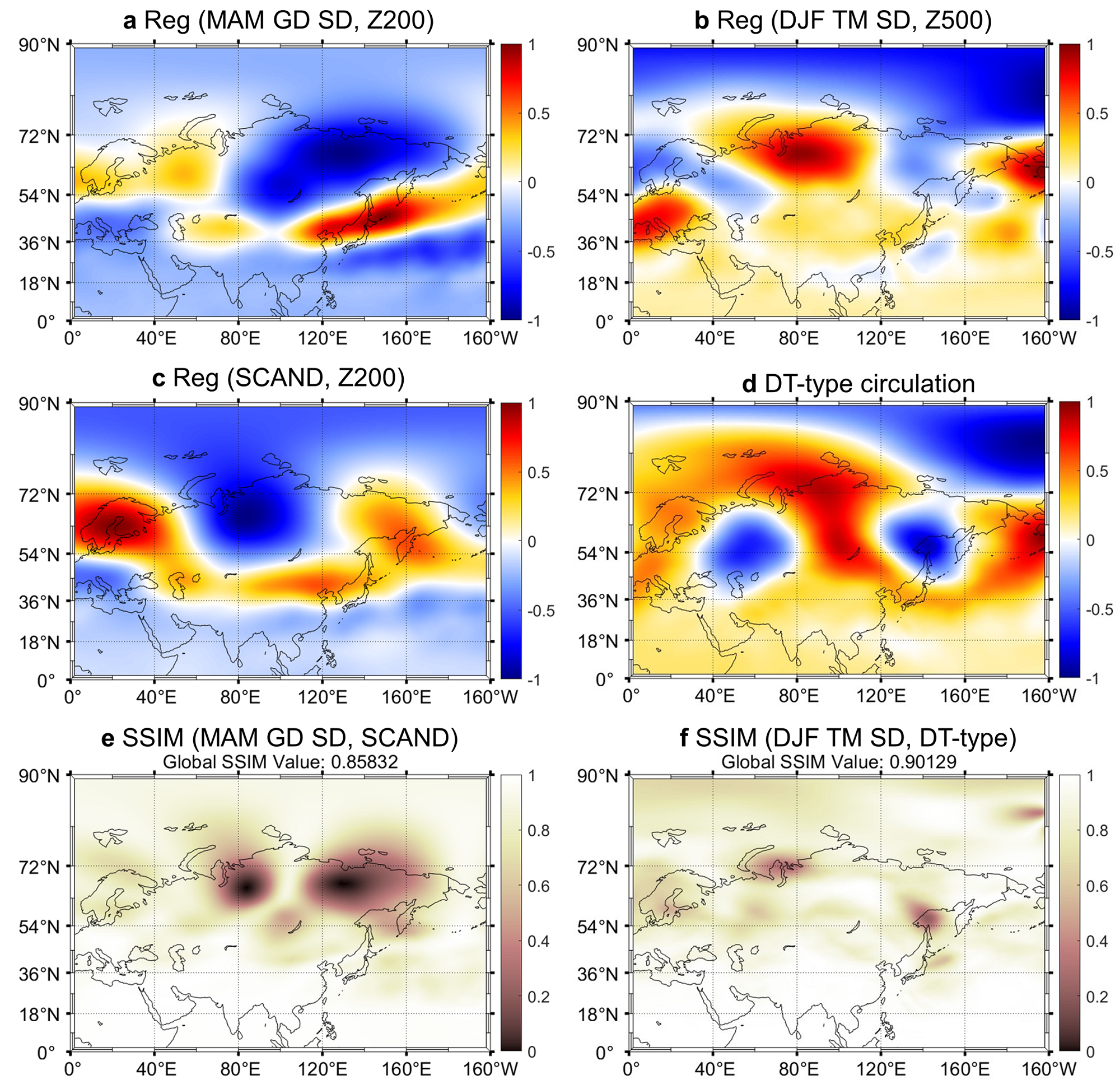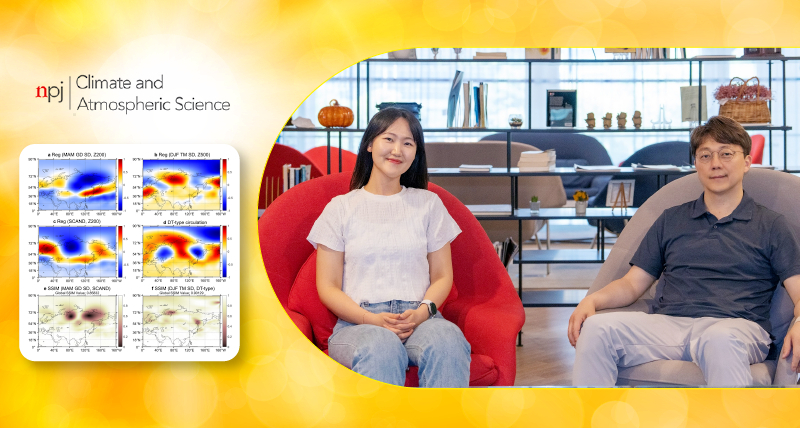As record-breaking heatwaves become increasingly frequent in South Korea, the development of AI-driven prediction technologies is emerging as a vital tool in responding to these extreme weather events and other climate changes.
Professor Jungho Im and his research team from the Department of Civil, Urban, Earth, and Environmental Engineering at UNIST have developed an innovative AI model for predicting heatwaves. This model analyzes a range of global climate factors, including sea surface temperature (SST), soil moisture (SM), snow depth (SD), and sea-ice concentration (SIC). Notably, the snow depth in the Mongolian desert and the Tianshan Mountains has been identified as a critical factor in forecasting the number of heatwave days in South Korea.

Figure 1. Geographical distribution of selected teleconnection drivers for heatwave frequency in South Korea.
The concept of teleconnection—where the variability of terrestrial and oceanic conditions interacts with the atmosphere to influence weather patterns in distant regions—was foundational to this research. The team identified specific areas that significantly affect heatwaves and integrated these findings into their prediction model.

Figure 2. Time series of SHAP values for teleconnection drivers.
Their research demonstrated that an increase in snow depth in the Tianshan Mountains during winter, coupled with a decrease in snow depth in the Gobi Desert during spring, are key variables in predicting summer heatwaves. The analysis confirmed a correlation between heightened variability in snow depth in these regions and rising summer temperatures in Korea.

Figure 3. Composite maps of summer tropospheric conditions by snow depth in the Gobi Desert (MAM GD SD, Top) and northern China (MAM NC SD, Bottom).
Remarkably, the snow depth in the Tianshan Mountains played a significant role in predicting the heatwave experienced in 2023. The complexity of interactions among various climate factors, such as soil moisture and sea surface temperature, is expected to evolve further in 2024.

Figure 4. Atmospheric Patterns induced by variability in the two snow depths and their relation to heatwaves in South Korea.
Researcher Yeonsu Lee commented, “We have established a link between snow depth and heatwaves in the Mongolian desert and the Tianshan Mountains.” She added, “This structure aligns with existing large-scale teleconnection patterns and is likely to be crucial for improving heatwave predictions.”
Professor Im noted, “By monitoring the relationship between previously unexamined teleconnection factors and heatwaves, we can enhance prediction accuracy.” He emphasized, “This study will significantly contribute to our understanding and response to heatwaves in Korea.”
This research was supported by the Korea Meteorological Administration (KMA), the National Research Foundation of Korea (NRF), and the Ministry of Oceans and Fisheries (MOF). The findings of this research have been published in npj Climate and Atmospheric Science on August 3, 2024.
Journal Reference
Yeonsu Lee, Dongjin Cho, Jungho Im et al., “Unveiling teleconnection drivers for heatwave prediction in South Korea using explainable artificial intelligence,” npj Clim. Atmos. Sci., (2024).












